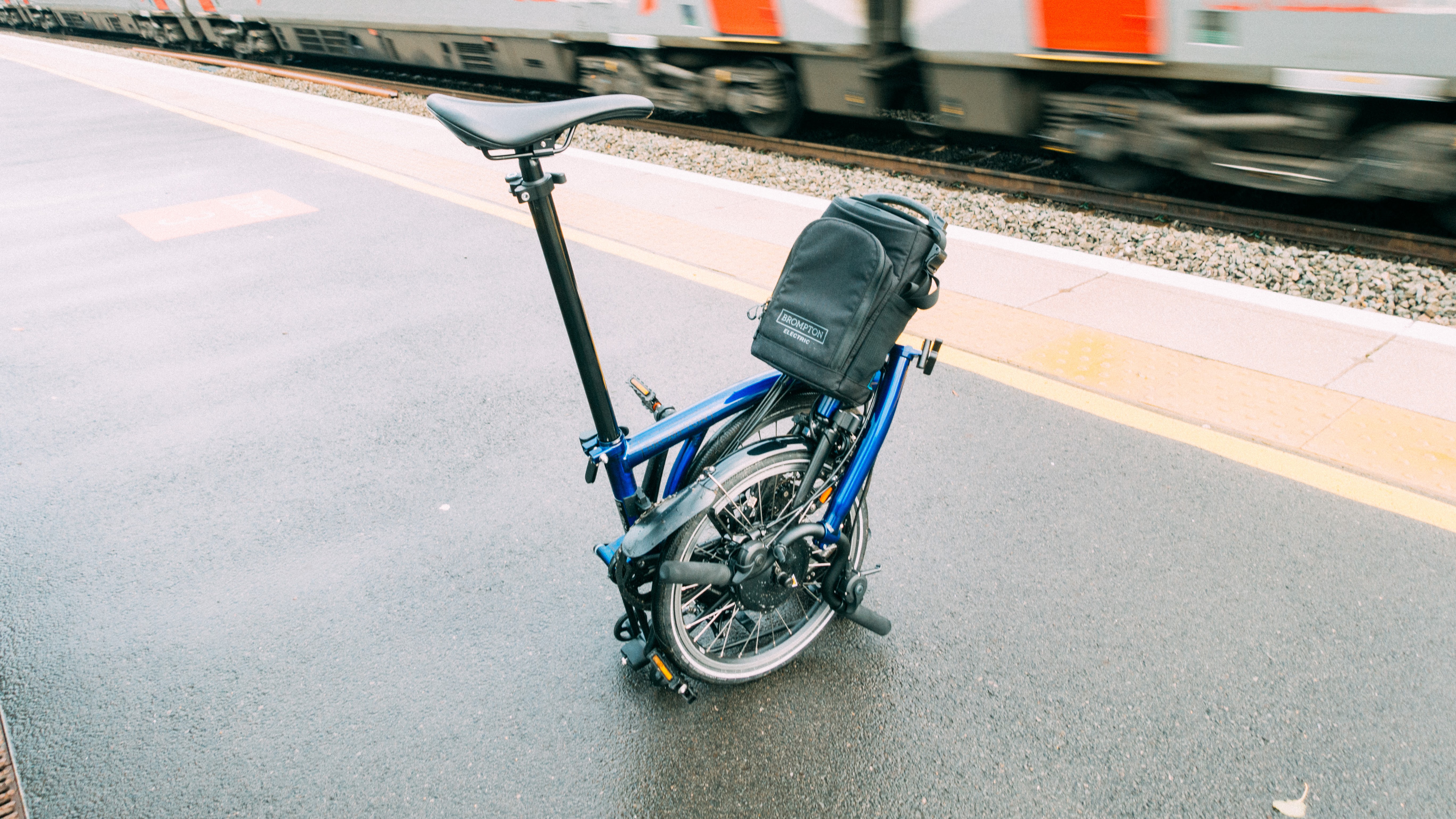Cyclingnews Verdict
Nimble, foldable, powerful, with solid range but I still think you should buy the C Line instead
Pros
- +
Addition of power doesn't compromise foldability
- +
Decent range
- +
Wide range of gears
Cons
- -
Gear granularity unnecessary
- -
Expensive for what it offers
You can trust Cyclingnews
Price: £3,895
Size: One size, bar/stem options to adjust height
Weight: 16.3kg
Groupset: Brompton 4sp x Sturmy Archer 3sp hub
Wheels: Brompton 16"
Tyres: Continental Contact Urban
Saddle: Brompton's own
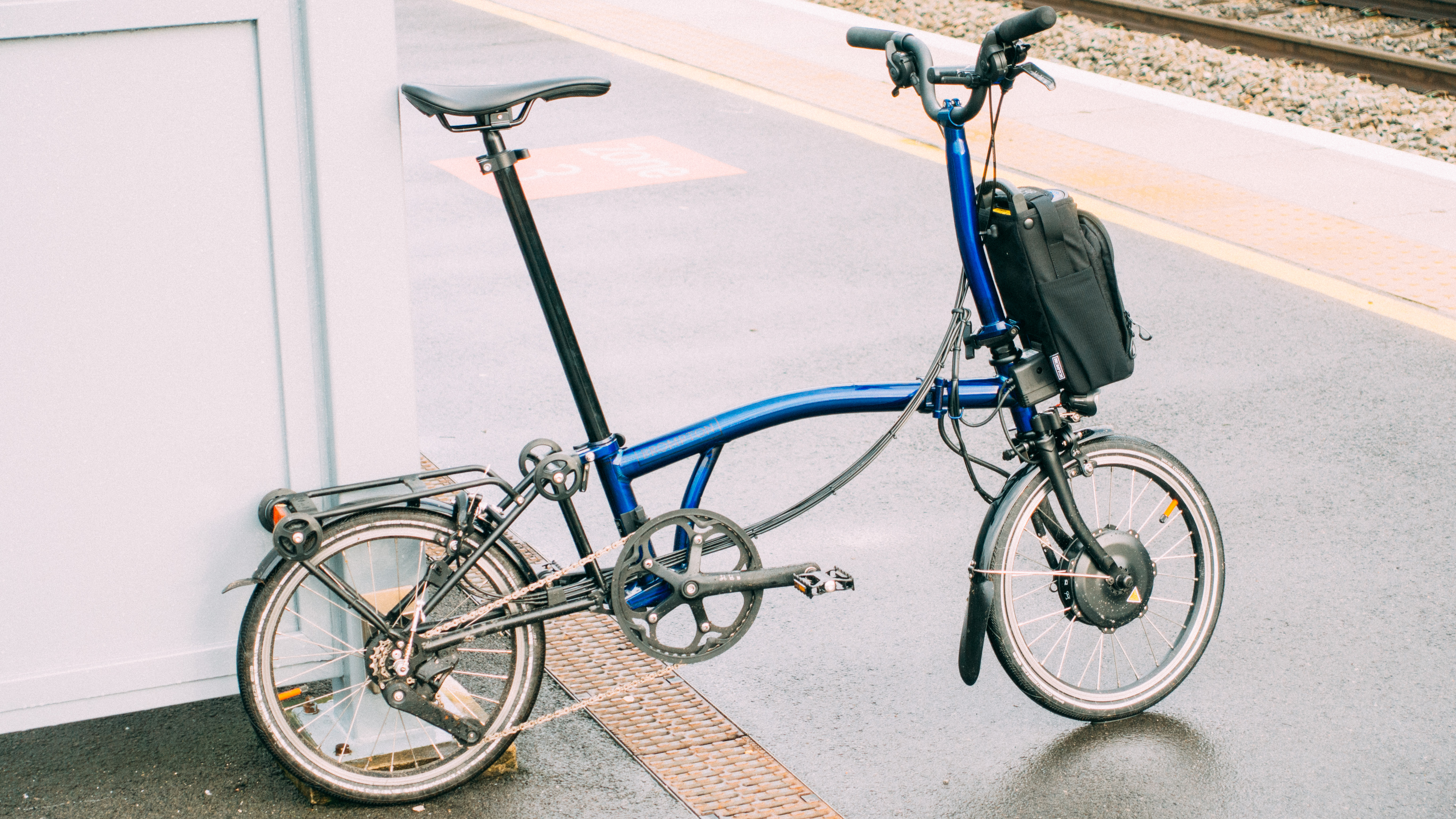
This is the second Brompton I’ve reviewed. The first was the non-electrified, normal Brompton P Line. If you simply can't be bothered to read that review, the take-home message is that I think you should save yourself a grand and just buy the all-steel C Line. I wasn’t convinced the 4-speed derailleur offered any improvements over the hub gear offered, and the only real savings were weight, at the sacrifice of durability and dependability in all weathers.
Both the electrified and acoustic C Line ranges feature derailleurs now. I was rather surprised then, as you might imagine when the latest version of the Electric P Line came with a new, Brompton-branded three-speed hub… AND a four-speed derailleur. Yes, that’s right, it’s 12-speed, in a Frankenstein sense. I suppose the Classified hub system proved quite happily that you can mate hub and derailleur systems, though the Classified system is undeniably neater.
Is this actually of any benefit to the rider, or just adding complexity? I’ve had the new Electric P Line since mid-November, and have been nipping to and from work and my partner’s house. I’ve caught the train with it too, when the rail strikes have allowed me to do so. I reckon I’ve got enough of a feel for it to see if it represents good value, the utility it promises, and overall whether it deserves to sit in our guides to the best folding bikes, the best commuter bikes, and the best electric bikes.
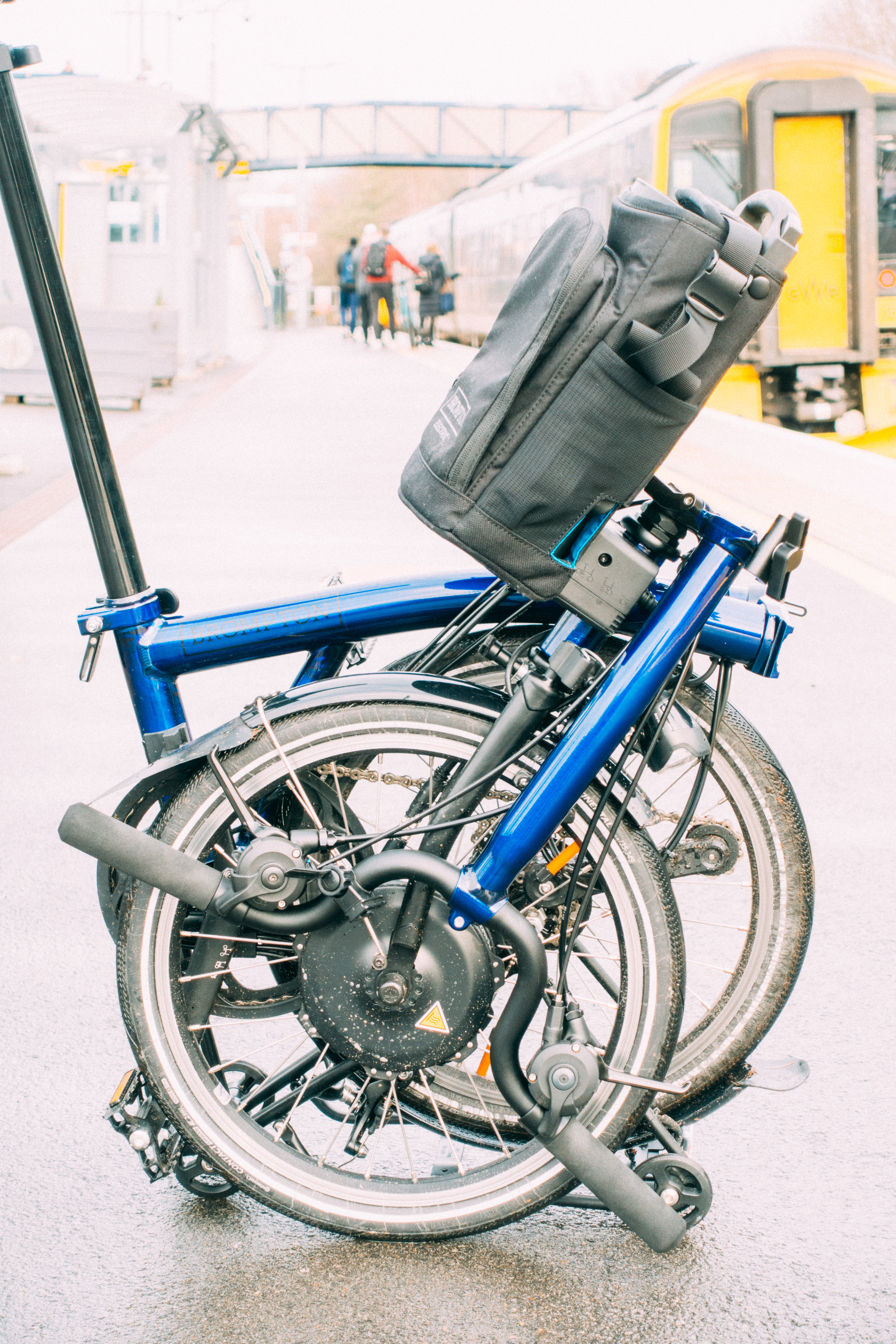
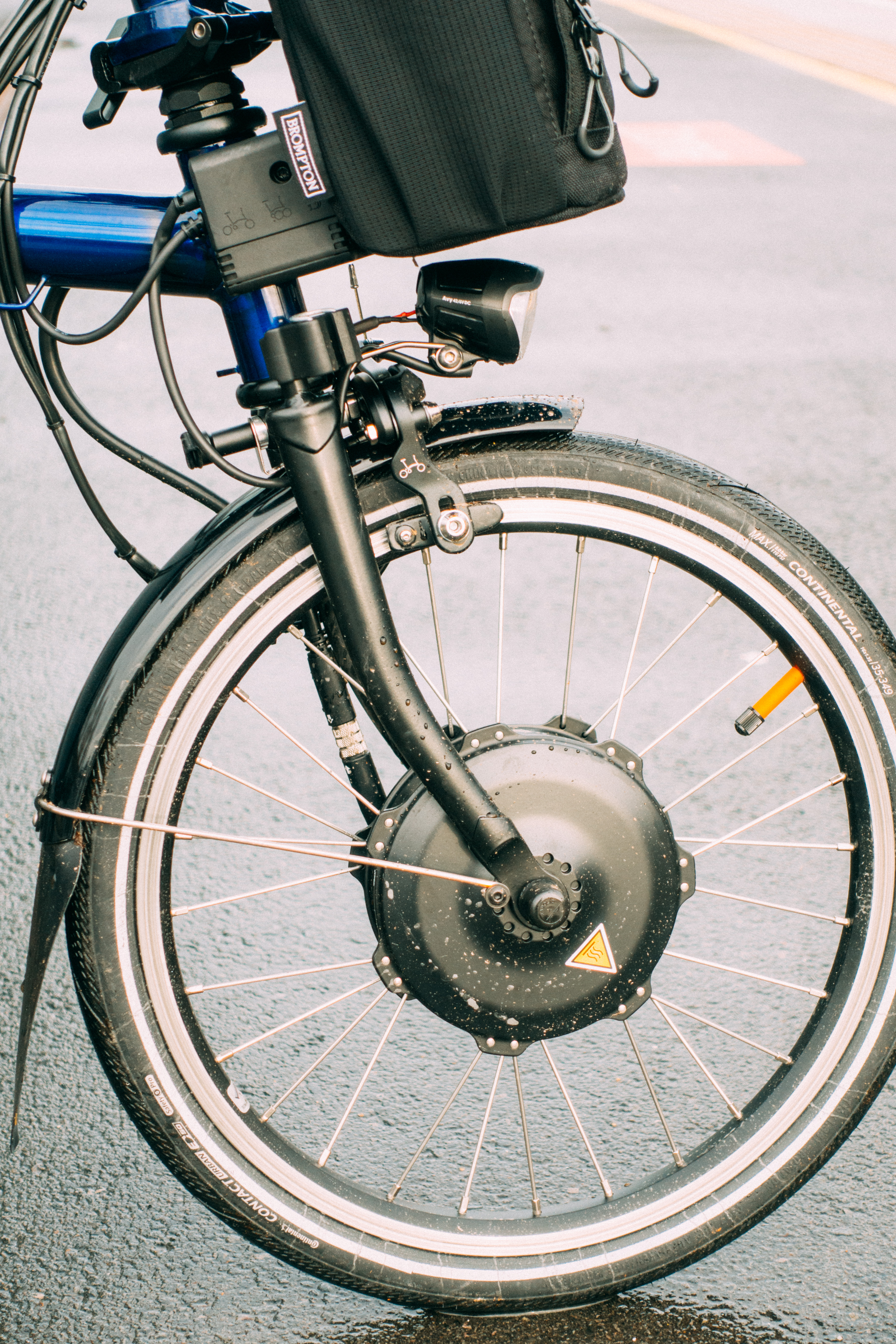
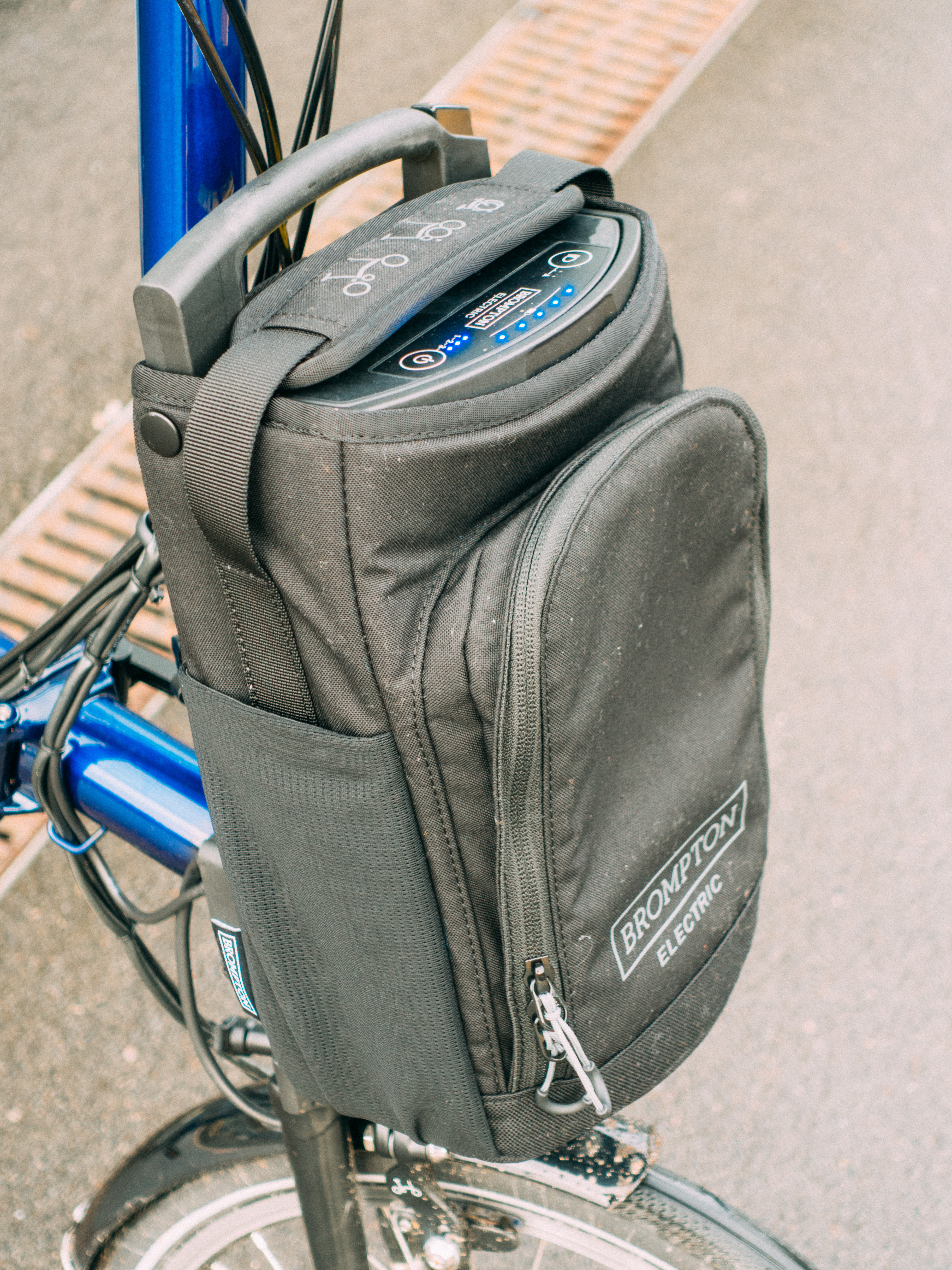
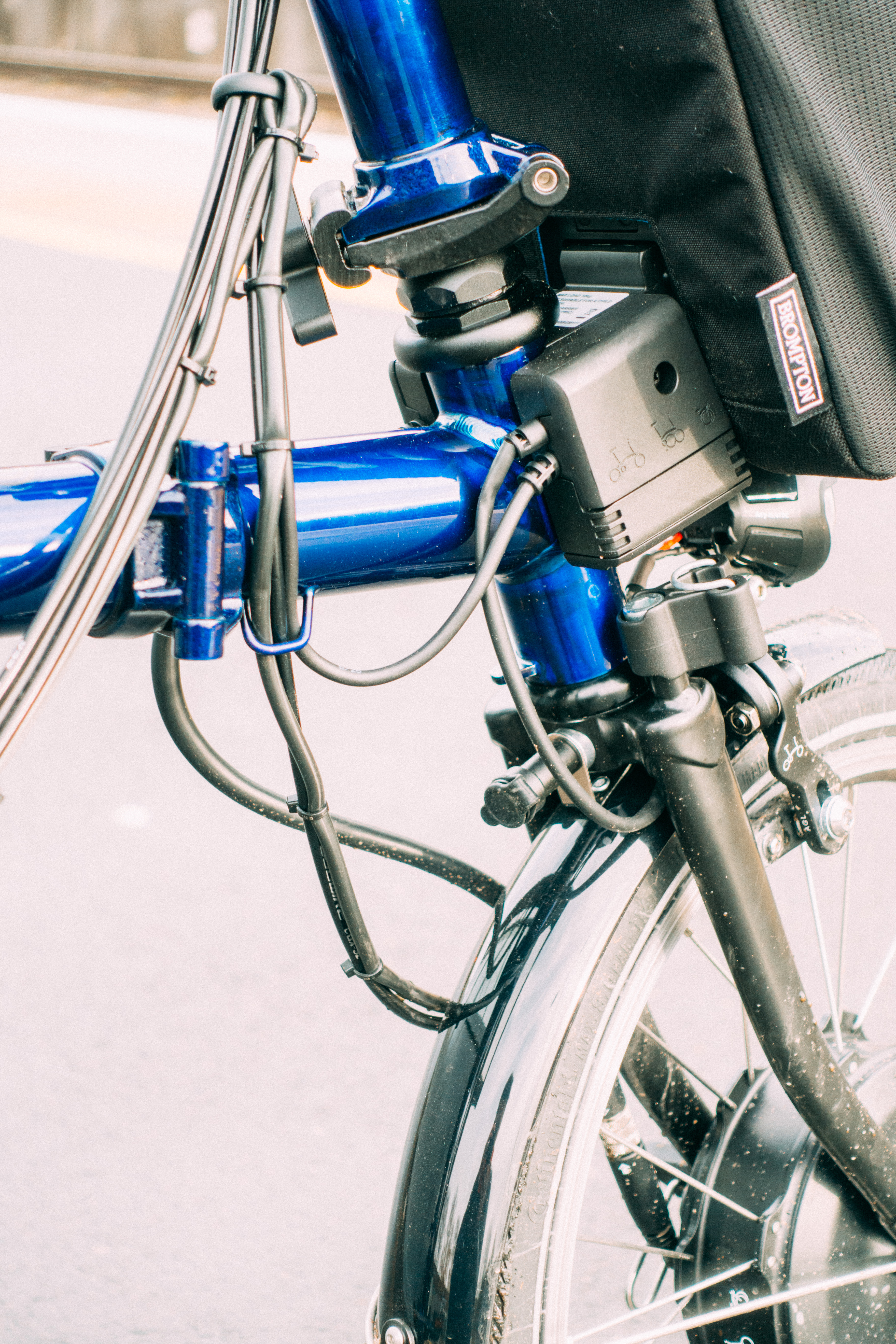
Design and aesthetics
To make an electric bike that is in any way functional takes a degree of design nouse. To make a folding bike that is sturdy and doesn’t ride like a terrifying noodle likewise. To create an electrified version of the latter is a feat that needs applauding. There’s a hell of a lot of complexity that’s gone on in the creation of this new model, but it’s clearly an evolution rather than something from the ground up.
At the heart of the bike is the iconic Brompton frameset, in this guise with the titanium rear end and forks rather than an all-steel construction. So far, so good; it’s a tried and tested system, it works well, and there’s no need to mess about with it. I don’t actually take great offence to the fact the power is delivered via a hub, rather than a crank-based system. It’s not perfect, as we’ll get into later, but given the constraints of the platform, I don’t see how any other system could have been used. For reference, the motor is a 250W unit.
The battery storage isn’t subtle, but it is effective. The little power-satchel clips on and off with ease, and can store the rather bulky charging cable and transformer in a pouch at the front, should you wish to charge on the go.
Emanating from around the base of the powerpack coalesces a morass of cables and wires. Honestly, it looks like an electrical junction box; you’ve got the power cable going to the front hub, the power cable for the front light, and then emanating from the light is the second cable that powers the rear light. Tied into the mass are the rear hub shifter cable and the rear derailleur shifter cable, plus the rear brake cable. All of these must have enough slack in the system to not get pulled tight when folding, but also not so much slack that they become a snagging risk.
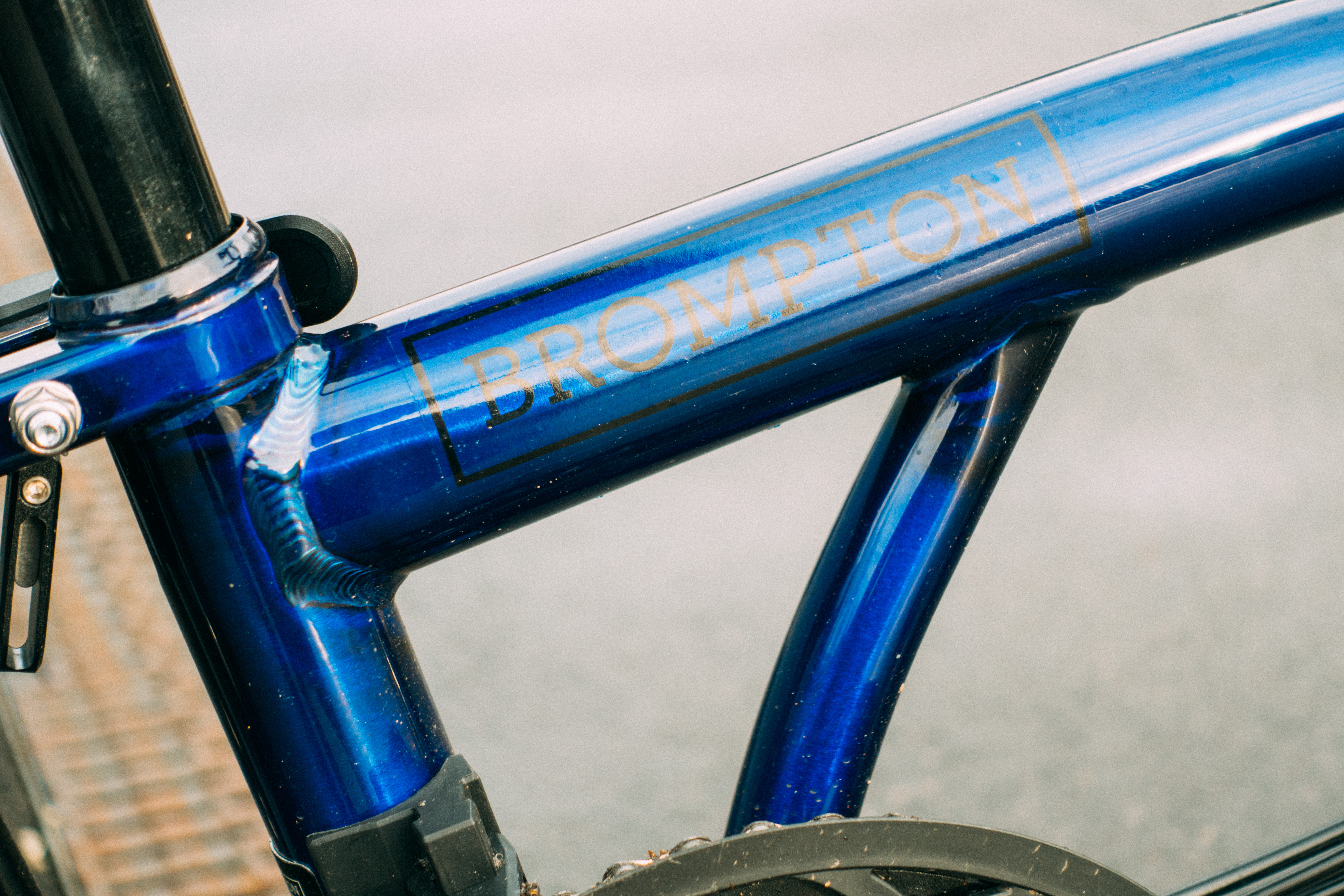
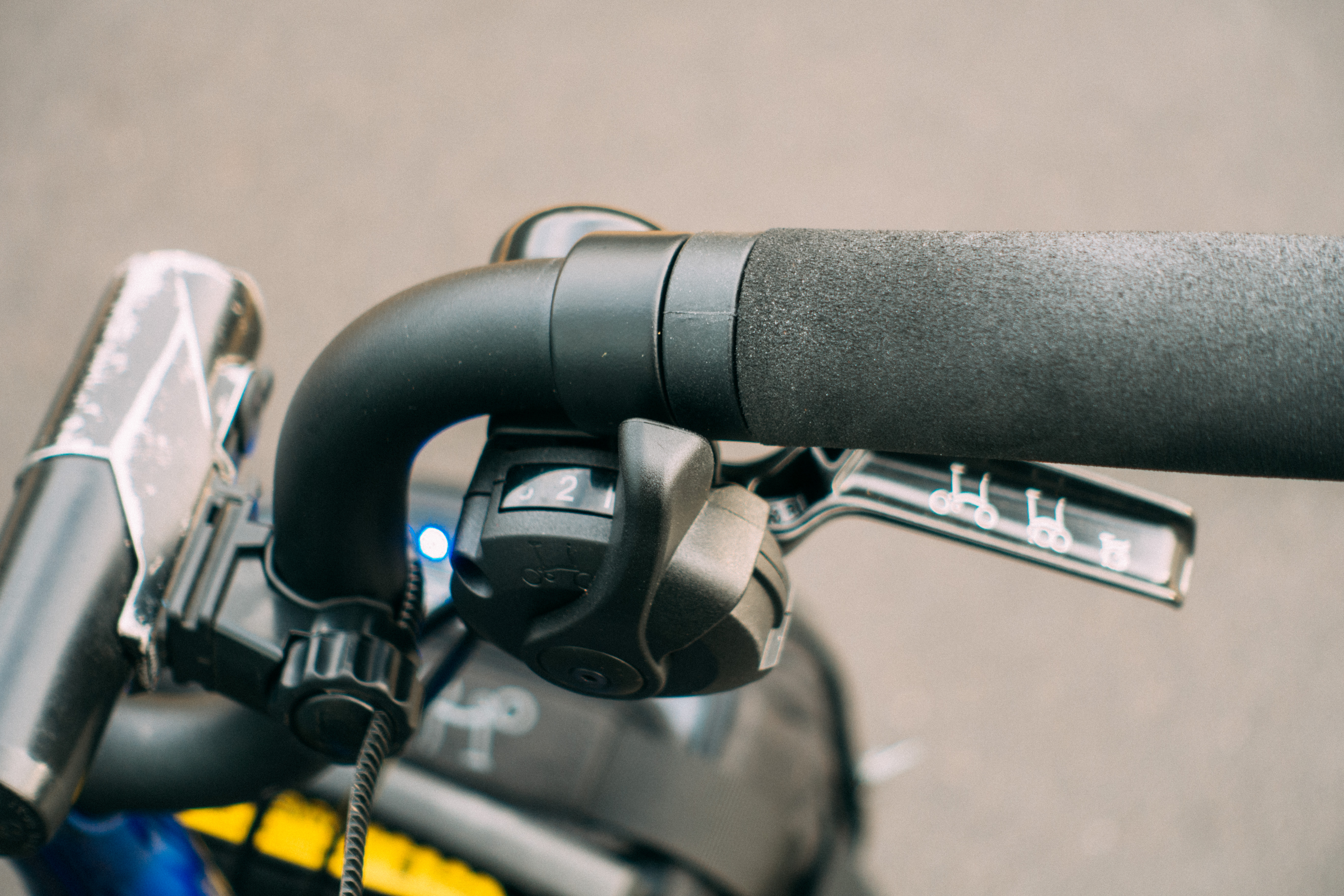

Unsurprisingly everything is tied together in one great big bunch that slings beneath the top tube (well, the horizontal tube). To be fair, it's about as neat as you could expect given the design constraints, and doesn’t negatively impact the bike aesthetically. In my eyes, the benefit of a utilitarian bike is that adding more utility (cables = utility, in this case) doesn’t detract. Conversely in my view detracting from the utility of a bike like this decreases its aesthetic value… maybe don’t ask me my opinions on a titanium Brompton - I admittedly haven’t ridden one, and our editor did love it.
You've got a built-in front and rear light, and in this case, I’ve also got the wheely rear end, which makes it easy to push it around the station platform for an hour while waiting for your delayed train.
I am still not overly taken with the derailleur design, but in this case, it performed much more adequately than the last one I tested. I think the limit screws should be more easily adjustable, but as these were set correctly by the factory I have no complaints from my actual testing.
One final criticism I have from a design point of view is that the tyres are fitted with TPU inner tubes. Don’t get me wrong, I love TPU inner tubes (so much so that they featured in my 2023 Gear of the Year), but they can’t be easily patched. I’d much rather have bog-standard butyl tubes that I can patch if necessary. If you’re riding around a city you’re going to encounter glass.
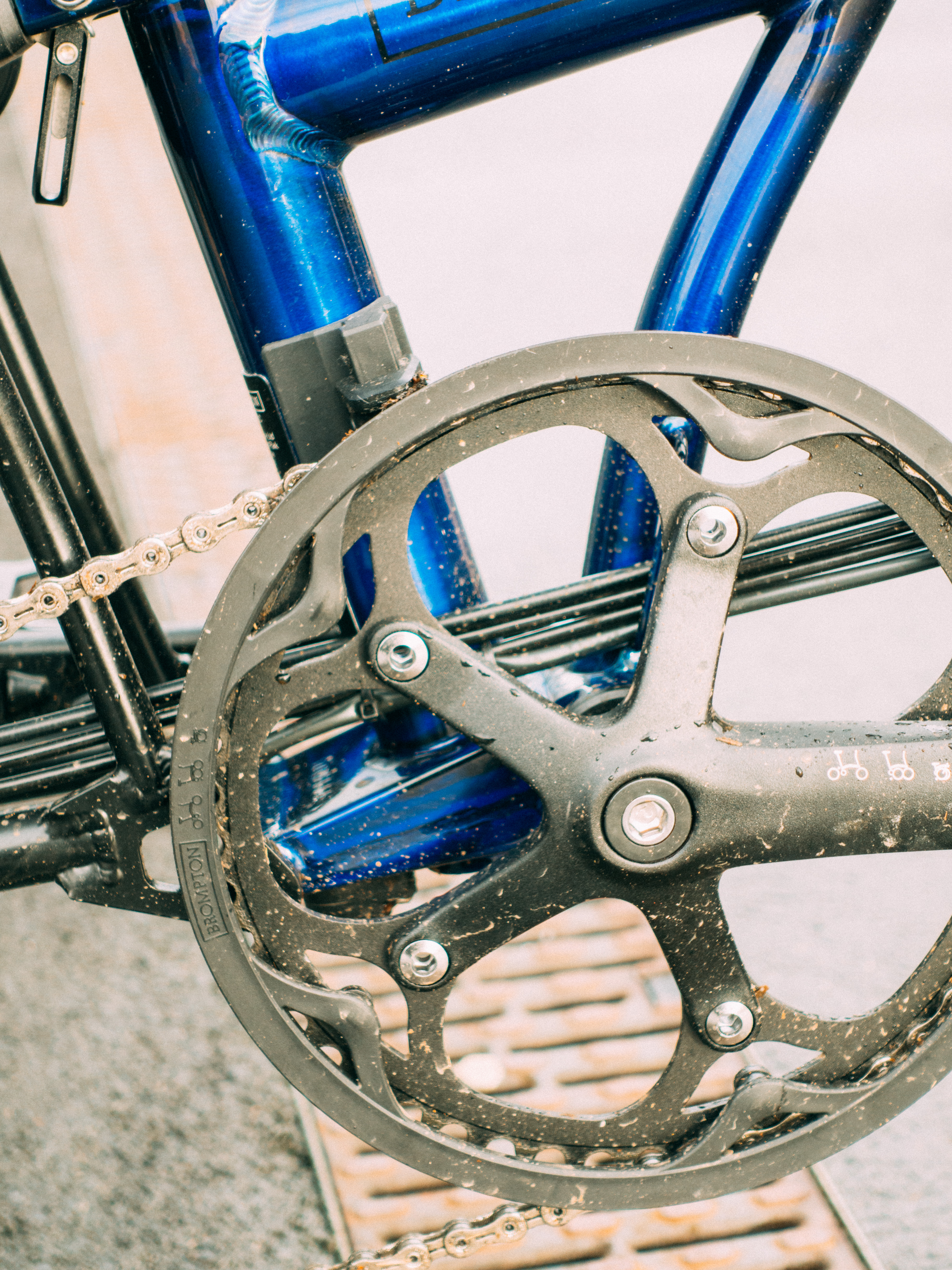
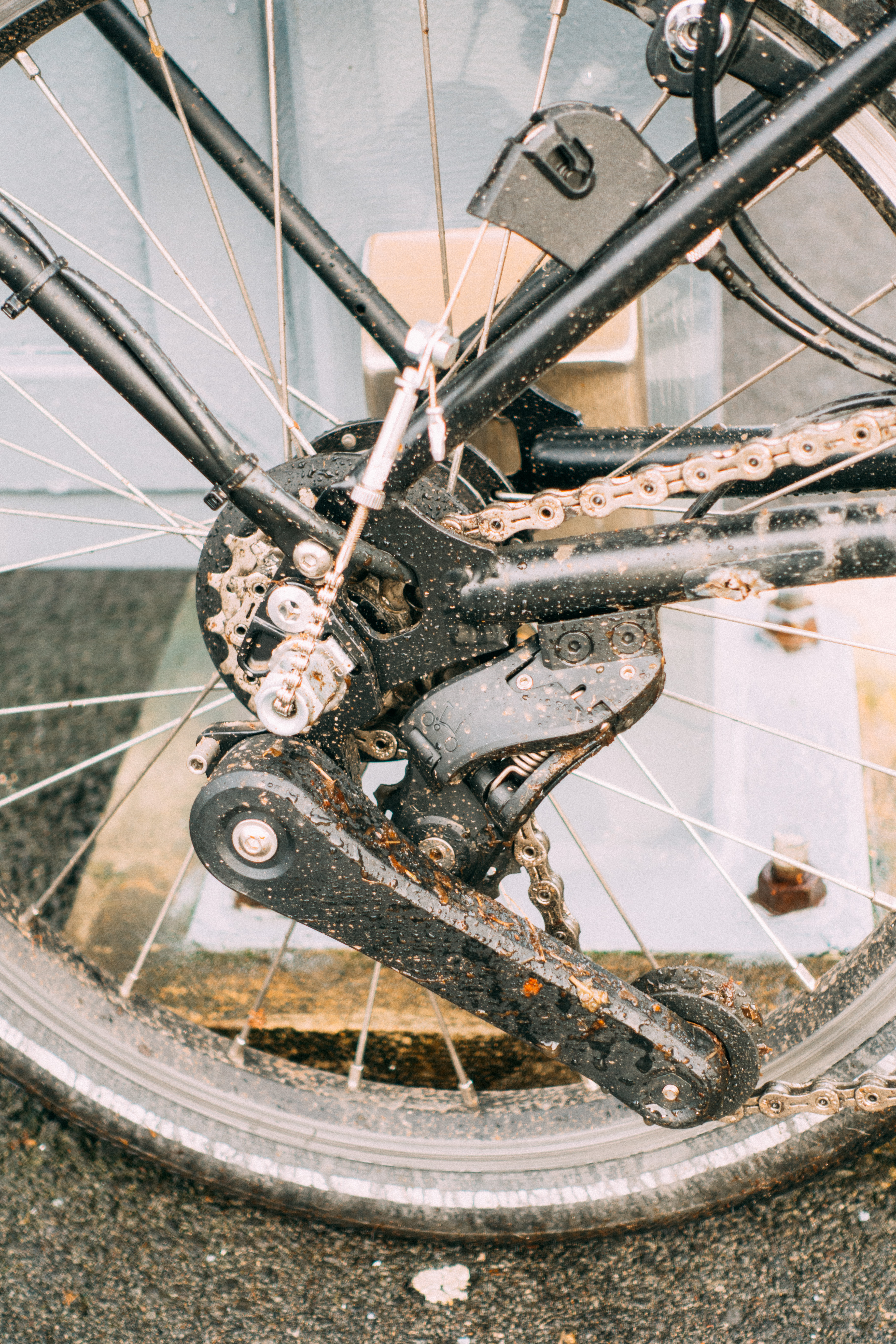
Performance
Having twelve speeds is one of those things that looks good on a stats sheet, but in reality, especially with the electric assist, you only really need the three offered by the hub drive. The gear range is sufficient without the fine-tuning of the derailleur gears; you effectively have one for uphill, one for flat, and one for downhill that you’ll never use because you’ll be happier to freewheel. I’m not saying I never used the derailleur gears, but it was certainly a rarity, and it was only to swap between two of the cogs; electric assist rarely means you’re worrying about the ideal cadence.
The handling was classically Brompton. Agile or jittery depending on your point of view, but once you get used to it, it’s no issue. I wouldn't necessarily want to tackle a twisting, steep mountain descent on it, but dashing to the shops is perfectly fine. The small wheels do take a bit of a battering on Britain's famously terrible road surfaces, but this is the price you pay for being able to take your bike on the train without having to book a space, only to find someone else has taken your booked space.
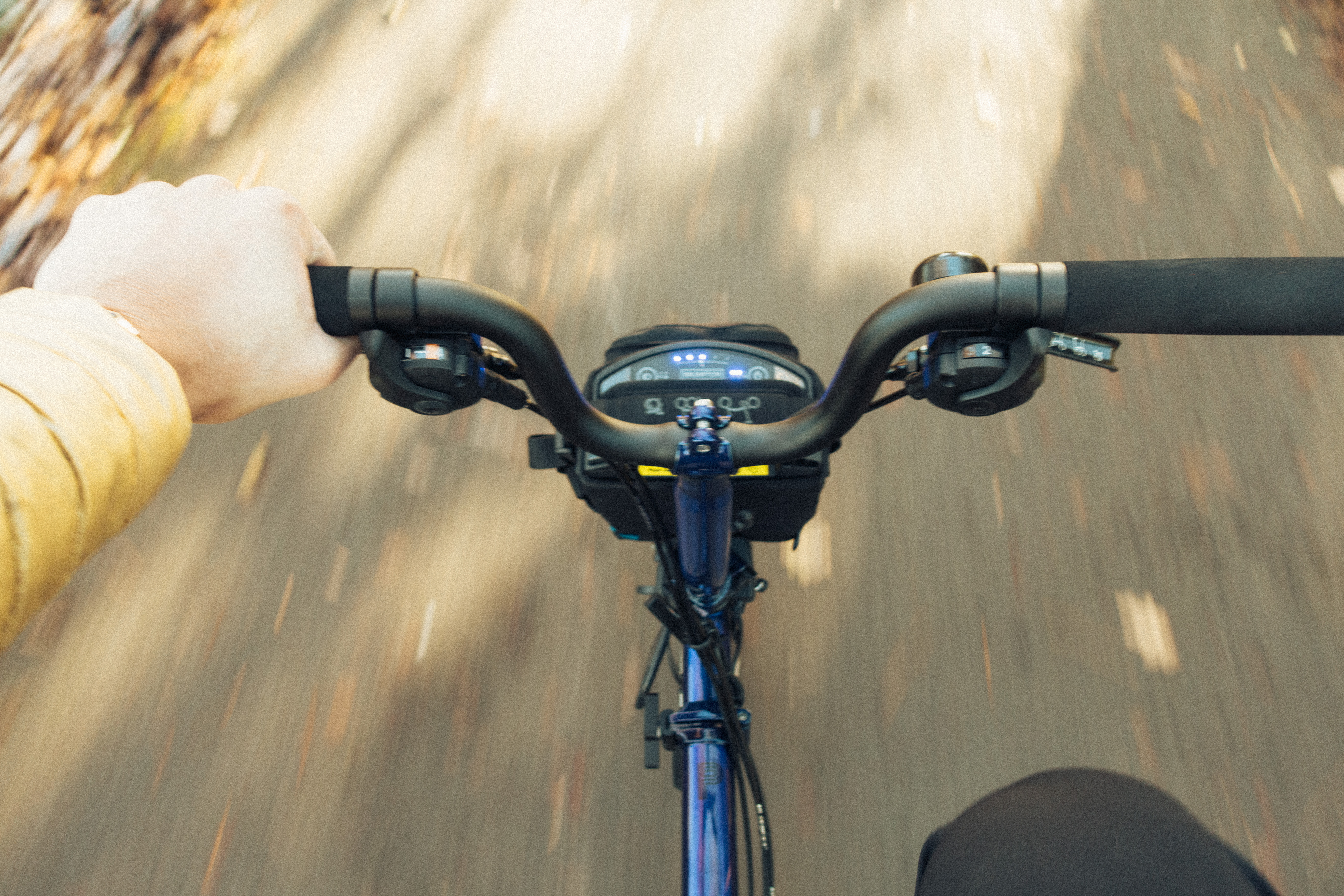

I have no reason to doubt the range stated either. My commute to work is more or less 15km on the nose and is more or less totally flat too, and after spending about half the time at maximum assist and half the time at ⅔ assist it uses up about half a tank of electrons each way. It’s so easy to disconnect the battery and plug it in at your desk though that I inevitably just blasted it on full power both ways. Also, the bike's ability to fold up isn’t hampered at all by the power pack. You needn’t take it off unless you want to carry it or stop youths nicking it on the train.
On the whole, I rather enjoyed my time with the P Line. There are some things I am critical of, which I’ll outline shortly, but if you need a bike that folds and provides electrical assistance then I suspect there isn’t anything inherently wrong with it as a system. It certainly helped me arrive at work less sweaty, I could pop it in the luggage rack of a train, and while it’s a bit more hefty with a battery and motor than without, I think the overall energy expenditure is still going to be less. As with the standard P Line, my main gripes are that I don’t necessarily think it offers anything that useful over and above the Electric C Line. You get a lower weight (overcome easily by the motor), and a better fine-tuning of your gear selection (overcome easily by a motor).

My two main issues with the Electric P Line, which will also be issues on any of the electric Brompton, are the way the power is delivered, and the front light. To start with the light, if you’re riding in a well-lit city then it won’t be much of an issue, but if you at any point ride away from street lighting you will be effectively blind. My commute takes me through an unlit park, and I had to ride at a walking pace because only a 5ft rectangle in front of the wheel is illuminated. I shortly added my own auxiliary front light to rectify this issue, but you shouldn't have to.
Secondly (or firstly), the power is delivered in a very bursty way. This is the hallmark of a hub drive, as the pedal sensor is set into the bottom bracket and so there’s a bit of a delay between you actually applying power, and additional power being provided. This is easily dealt with by viewing the easiest of the hub gears as your ‘setting off’ gear, before swiftly switching to the middle of the three and leaving it there for more or less the remainder of your journey. Given the design constraints I don’t actually begrudge this, but what I did not like was the delay in the power stopping. Should you wish to edge towards a pedestrian crossing the cranks occasionally tell the motor to provide a surge of power, and there is no signal from the brake lever to override this, meaning that your brakes work against the motor as it tries to urge you into passing traffic. A motor cutoff switch wired into the front brake lever would have done wonders. Josh tells me it was a similar situation when testing the Cytronex ebike conversion kit, which incidentally he had fitted to a Brompton.
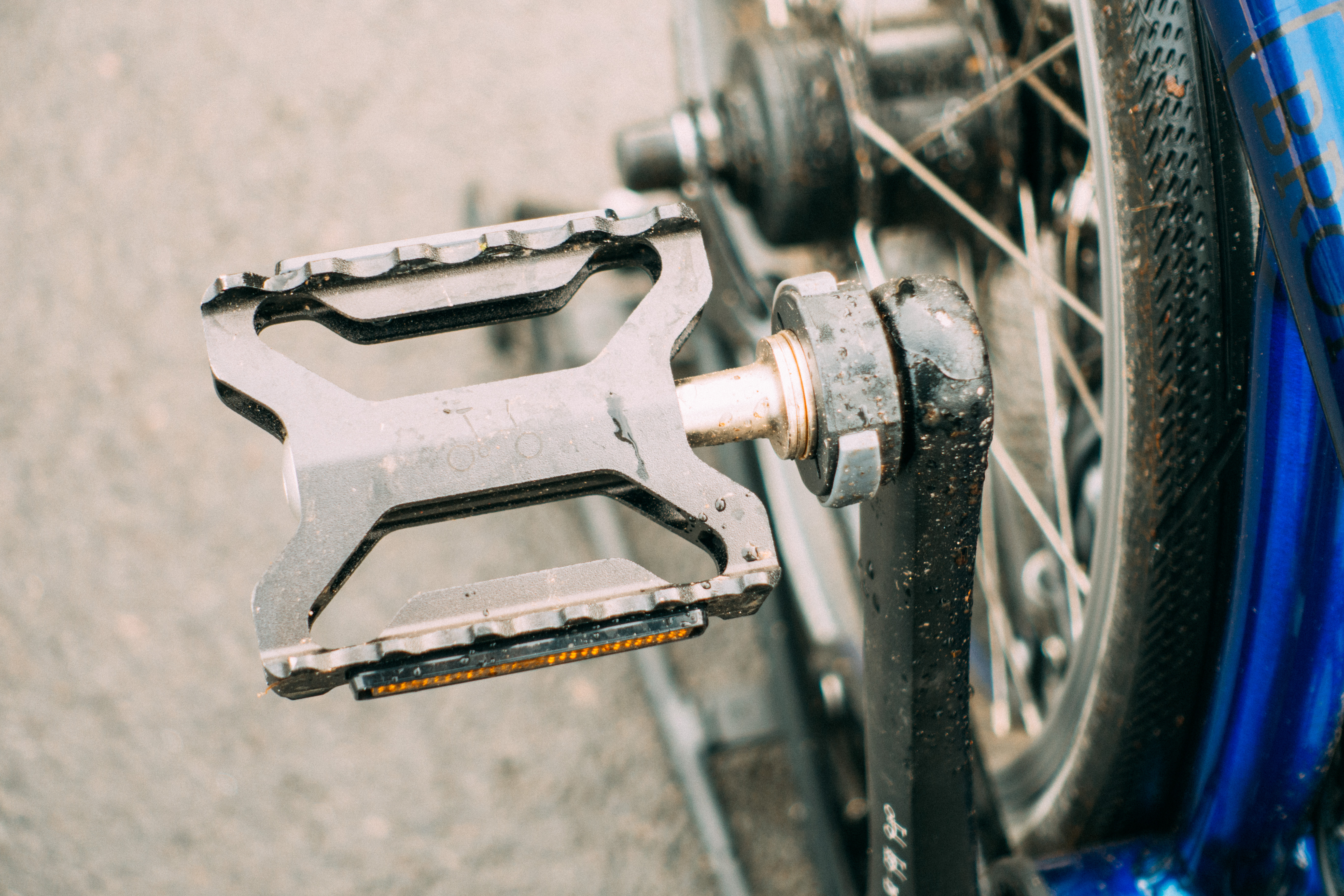
Value
Sadly my opinion here is that the Electric P Line falls into the same trap as its acoustic sibling, insofar as I don’t think it offers any real additional value over the Electric C Line. The full price, for reference, is £3,895. Perhaps the gap is actually even greater, as the benefit of lower weight thanks to the part-titanium construction is offset by having a ruddy great 250-watt motor on the front.
I’m all for fancy bikes, and judging the value of something bonkers like the Colnago C68 is a very different prospect to something like this, which ultimately is a tool that, hopefully, will reduce the cost of your commute (in carbon, currency, or both) by allowing you to ditch the car. With a price differential of £745 that could well cover your season ticket for a year.
Verdict
In a vacuum, contrary to what you might believe, I have enjoyed my time with the Electric P Line. Zipping around the city with power assist is great fun, it makes commuting far less stressful, the foldability is excellent, and unlike last time the gearing worked more or less flawlessly, once I’d done an initial fine tune that doesn’t really bear mentioning.
However, bikes don’t exist in a vacuum, and this mid-range model adds little for the commuter to justify the higher price tag. If you want an electric Brompton, buy the C Line, and whichever one you get remember to factor in a bit of spare cash for a better front light.
| Attributes | Notes | Rating |
|---|---|---|
| Design and aesthetics | Does a very neat job of integrating power into the trademark foldable chassis | 9/10 |
| Components | The rear hub is dependable, but I'm not overly convinced by the shifters or the rear derailleur. Good brakes, though. | 7/10 |
| Performance | As an electric folding bike it performed brilliantly, save only for the surging power and the terrible front light | 9/10 |
| Weight | It's a bit of a lump, but all electric bikes are. The titanium bits have helped shave some grams. | 8/10 |
| Value for money | Sadly I cannot see a valid reason to spend the extra money on this over the Electric C Line unless you're far more obsessive over your gear selection than you should be | 3/10 |
| Overall rating | Row 5 - Cell 1 | 72% |

Will joined the Cyclingnews team as a reviews writer in 2022, having previously written for Cyclist, BikeRadar and Advntr. He’s tried his hand at most cycling disciplines, from the standard mix of road, gravel, and mountain bike, to the more unusual like bike polo and tracklocross. He’s made his own bike frames, covered tech news from the biggest races on the planet, and published countless premium galleries thanks to his excellent photographic eye. Also, given he doesn’t ever ride indoors he’s become a real expert on foul-weather riding gear. His collection of bikes is a real smorgasbord, with everything from vintage-style steel tourers through to superlight flat bar hill climb machines.
